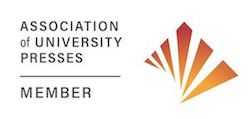Author and Printer in Victorian England
Allan C. Dooley
- Summary
- Reviews
- Author Bio(s)
Author and Printer in Victorian England demonstrates that printing technology shapes texts. The technology involved was a nineteenth-century revolution in printing methods; the texts were classic literary works by Victorian authors. What was at stake was textual control: who would decide how the text would read-author, compositor, printer's reader, or publisher? In a unique fusion of literary history and printing history, Allan C. Dooley explores the interactions between individual authors and their publishers and printers. He takes the reader through each stage of a work's development, illustrating how authors attempted to perfect and protect their writings from compositional manuscript through stereotyped reprints. His analysis includes details of a wide range of technical innovations and changes in practices in the printing of books between the development of printing machines in the 1830s and 1840s and the introduction of the Linotype in the 1890s. Drawing on the experiences of leading Victorian authors, he shows how nineteenth-century printing practices both enhanced and diminished writers' abilities to control texts. He reveals that much more was under their control than has commonly been believed and that many authors took advantage of printing technologies in order to gain and maintain control over the texts of their works. But new kinds of errors and new sources of inaccuracy were introduced by the technology as well.
- Summary
- Reviews
- Author Bio(s)
Author and Printer in Victorian England demonstrates that printing technology shapes texts. The technology involved was a nineteenth-century revolution in printing methods; the texts were classic literary works by Victorian authors. What was at stake was textual control: who would decide how the text would read-author, compositor, printer's reader, or publisher? In a unique fusion of literary history and printing history, Allan C. Dooley explores the interactions between individual authors and their publishers and printers. He takes the reader through each stage of a work's development, illustrating how authors attempted to perfect and protect their writings from compositional manuscript through stereotyped reprints. His analysis includes details of a wide range of technical innovations and changes in practices in the printing of books between the development of printing machines in the 1830s and 1840s and the introduction of the Linotype in the 1890s. Drawing on the experiences of leading Victorian authors, he shows how nineteenth-century printing practices both enhanced and diminished writers' abilities to control texts. He reveals that much more was under their control than has commonly been believed and that many authors took advantage of printing technologies in order to gain and maintain control over the texts of their works. But new kinds of errors and new sources of inaccuracy were introduced by the technology as well.
QuickLinks
Find a BookFor Our AuthorsRights and PermissionsRotunda Digital ImprintSupport UVA PressCareer OpportunitiesWalker Cowen Memorial PrizePrivacy PolicyContact Us
- P.O. Box 400318 (Postal)
- Charlottesville, VA 22904-4318
- 210 Sprigg Lane (Courier)
- Charlottesville, VA 22903-2417
- 434 924-3468 (main)
- 1-800-831-3406 (toll-free)
- 434 982-2655 (fax)

the future
of publishing
Affiliates



